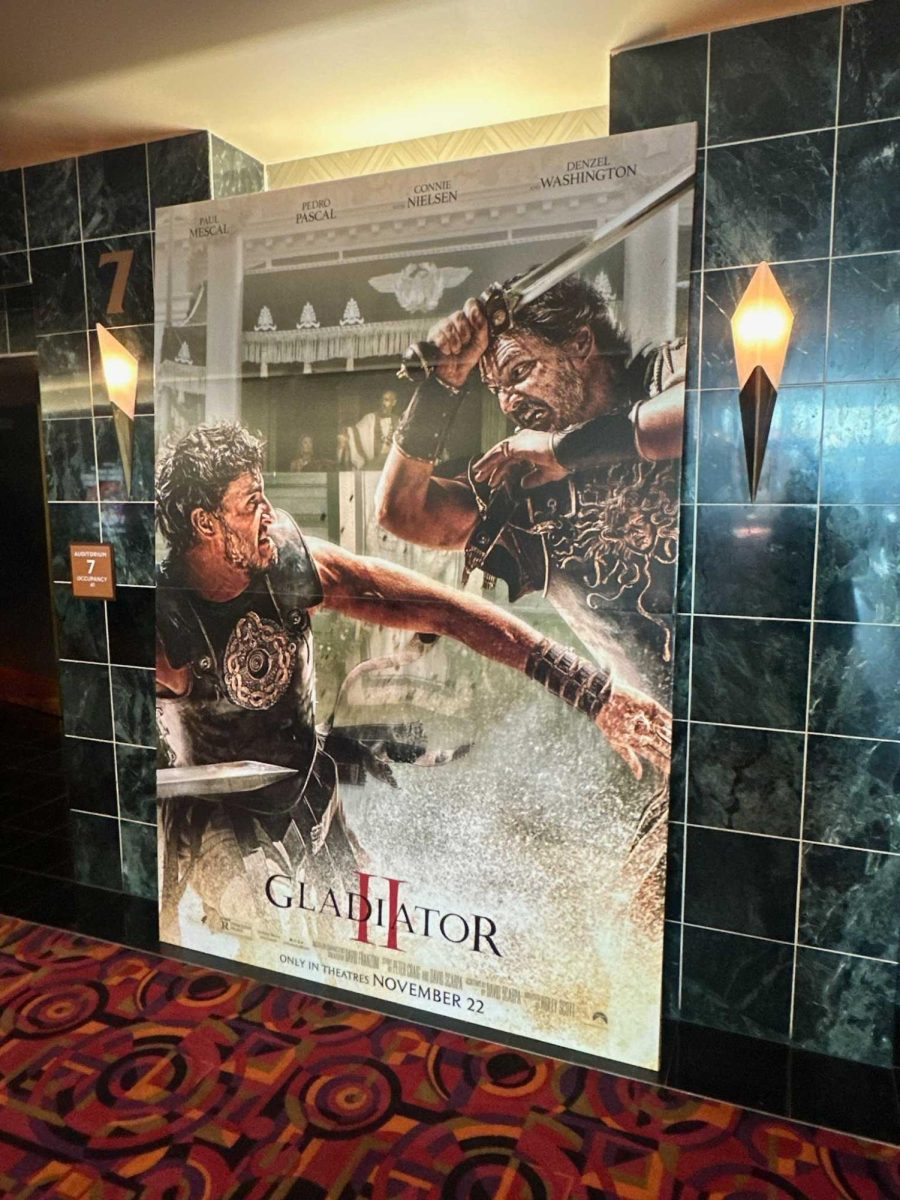“Gladiator II” delivered a flat and fleeting successor that failed to capture the previous film’s magic, despite strong performances and incredibly choreographed action sequences.
The sequel to one of cinema’s most cherished films released worldwide on Nov. 22 after being announced more than five years ago, featuring the return of the original film’s director, Ridley Scott. Paul Mescal (“Aftersun”) stars as Lucius Arelius and picks up his journey 16 years after the events of the first film where Maximus Meridius, played by Russell Crowe, was killed by his uncle.
Like the original, “Gladiator II” is at its best when the characters are in the arena. Unfortunately, the sequel doesn’t deliver the same drama captured by Crowe and Joaquin Phoenix in the original “Gladiator” nearly 25 years ago. The film is weighed down by underdeveloped characters that – despite compelling performances from its award-winning cast – fail to come to life at times.
In the opening scenes, Lucius’s village is captured by Roman naval forces under the command of Marcus Acacius, played by Pedro Pascal (“The Last of Us”). Lucius’s wife, Arishat, was killed during the raid, but Lucius survived and was taken back to Rome as a slave, setting up a revenge quest that lacks the same urgency as Maximus’s in the first film.
In Rome, he and other captives are forced to participate in a series of deadly fights at the Coliseum in order to gain their freedom. His strong performance in the first event is noticed by Macrinus, a businessman played by Denzel Washington (“Equalizer”), who promises Lucius a chance to battle Acacius if he proves himself in more gladiator performances.
“Gladiator II” hints at themes of loyalty and how power can affect people. Macrinus is the best example of this, as he uses people’s lives without regard for their well-being, focusing only on his own goals.
Conflict between the Roman elite ultimately leads to uproar among the Roman citizenry, culminating in a thrilling climax that makes you wish the entire movie could have been as exciting. The ending predictably leaves room for more films to be made in the Gladiator universe, which Scott said he might intend, according to Entertainment Weekly.
The film has pulled in a worldwide box office total of more than $320 million in its 12 days since release, against a reported production and marketing budget of more than $350 million, according to Variety.
The release officially marks Washington’s highest-grossing movie, with his performance as Macrinus stealing the show for most of the movie and making every scene he’s in feel high-stakes, despite an underdeveloped storyline.
Much of the film felt like it was trying too hard to be its predecessor, resulting in a movie that felt dated. While it was Scott’s film to direct after his first blockbuster hit, one has to wonder if the film would have been better off with a set of fresher eyes.
One area that is difficult to fault is the film’s action sequences, which deliver scene after scene. The fight scenes were choreographed by stunt coordinators Ray Nicholas and Cali Nelle, with the former returning from the first film. Nearly every action scene keeps you on the edge of your seat and wanting more.
The special effects for the film were also spectacular, with the visual effects studio Industrial Light and Magic taking the reins. The studio is most known for its work on the original “Star Wars” and the Marvel Cinematic Universe.
“Gladiator II’s” high points couldn’t save its story and writing, however, and ultimately, the film delivers a product that makes you wish they had let the original retain its glory.

